Tronsmart 4 USB + 1 QC2 TS-UC5PC
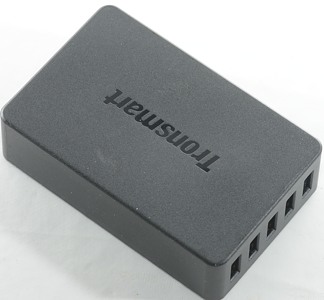
Official specifications:
- Model: TS-UC5PC
- Input: AC100-240V 50 / 60Hz 1.5A(Max)
- Charging Output & Power(VoltIQ ): 5V/7.2A(Maximum 2.4A Each) 36W
- Charging Output & Power(Quick Charge ): DC 5V/2A, 9V/2A, 12V/1.5A & 10W/18W(Max)
- Total Power: 54W
- Dimension: 94x60x25mm/3.7x2.63x0.98in
- Power Plug Type: US Plug, EU Plug, UK Plug
I got it from ebay dealer ynaan
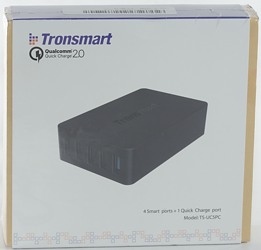
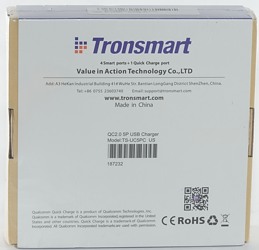

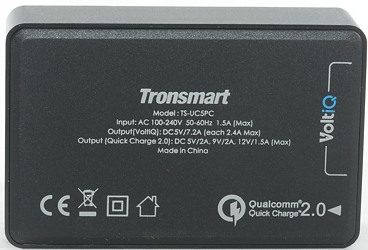
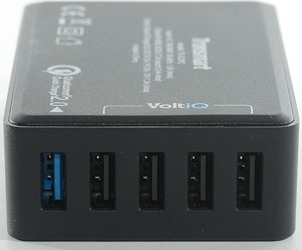
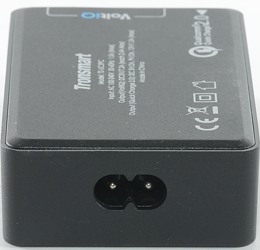
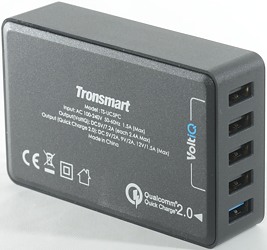
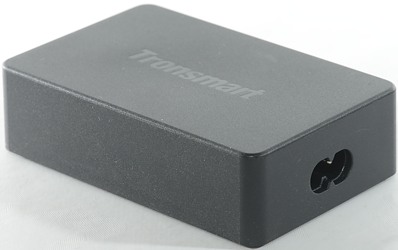
Measurements
- Power consumption when idle is 0.15 watt
- Regular usb output is auto coding with Apple 2.4A as maximum
- Quick Charge output is QC coding
- All regular usb outputs are in parallel
- Size: 94.4mm x 60.5mm x 26.6mm
- Weight: 154.3g (Accessories not included)
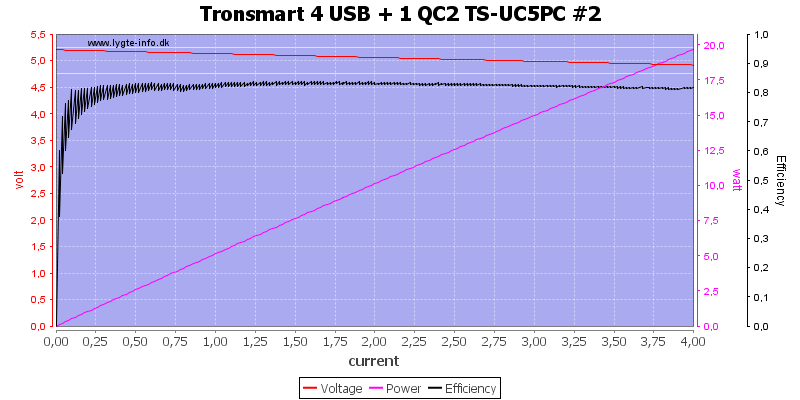
There is no individual port protection.
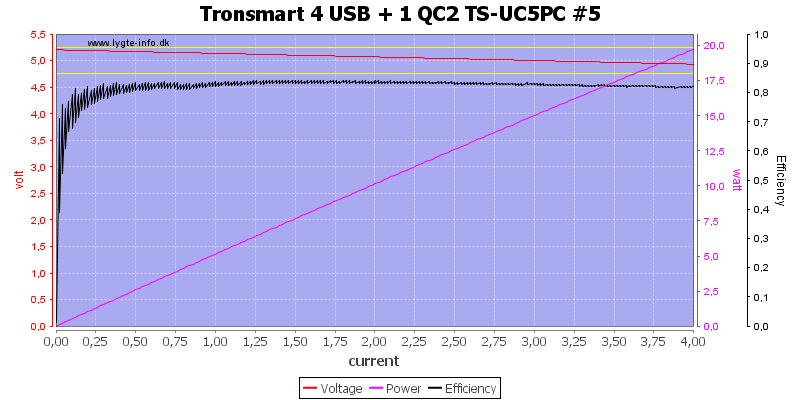
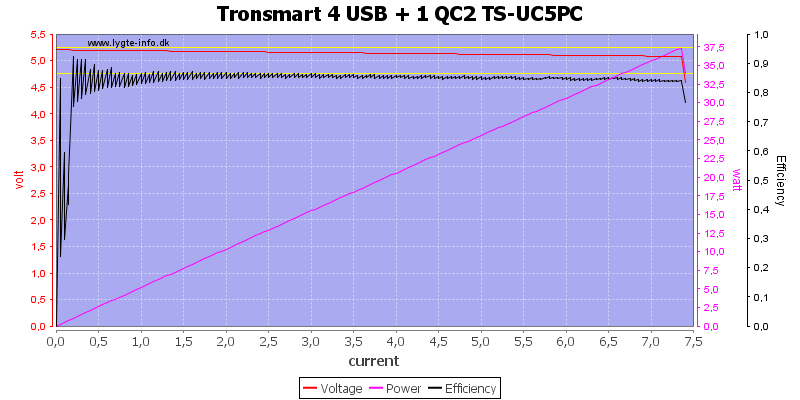
There is a common protection at about 7.4A and the efficiency looks good.
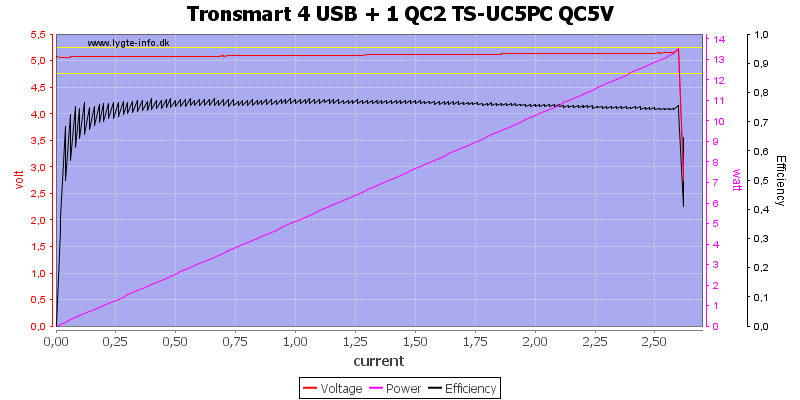
The QC output has a current limit at about 2.6A, more than enough for a 2A rated port.
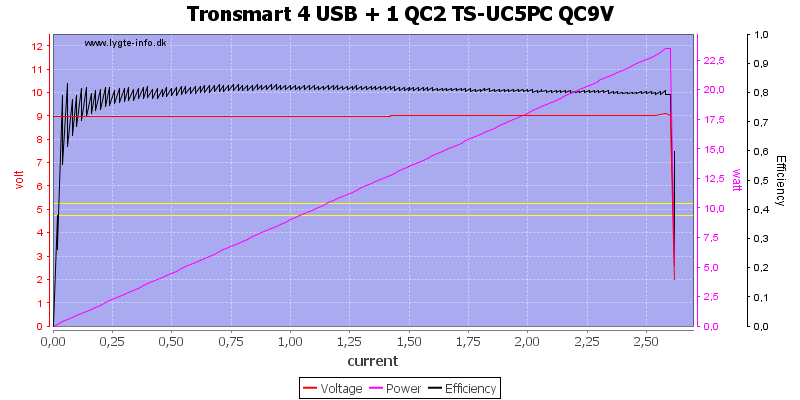
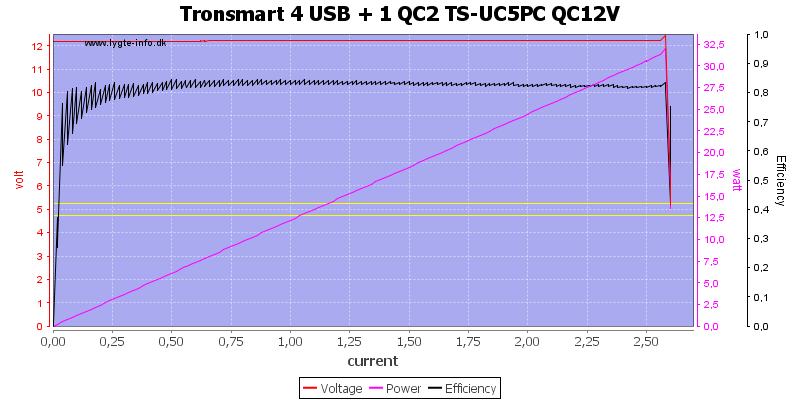
At higher voltage the limit stays at 2.6A and at full voltage.
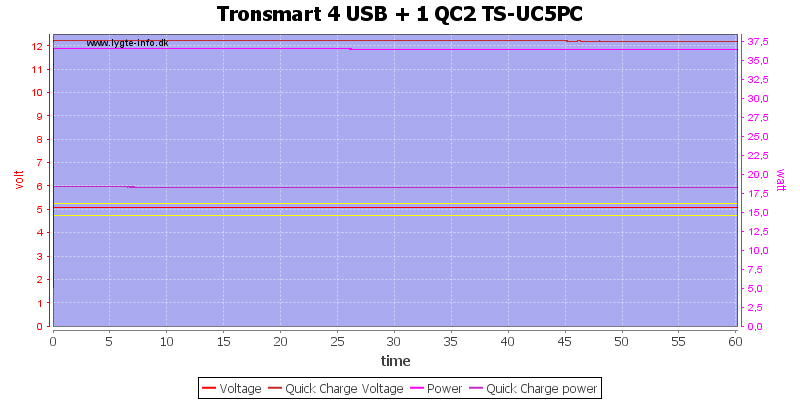
Loading usb out with 7.2A and quick charge 12V with 1.5A worked fine for one hour.
The temperature photos below are taken between 30 minutes and 60 minutes into the one hour test.
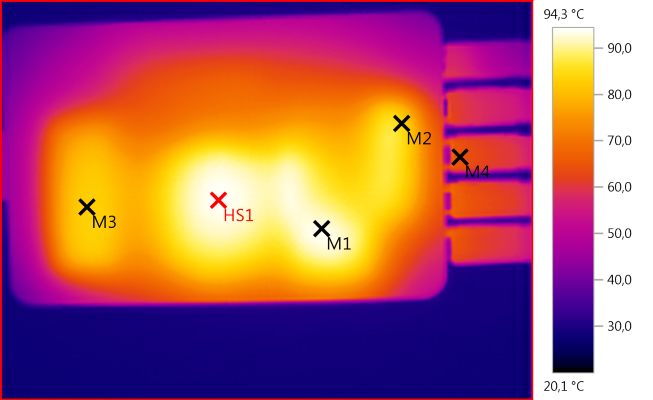
M1: 93,3°C, M2: 84,2°C, M3: 82,9°C, M4: 64,9°C, HS1: 94,3°C
Lots of stuff gets rather warm. M1 & M2 is the golden heatsink with the rectifier diodes. HS1 is the transformer and M3 is the switcher transistor heatsink.

M1: 68,3°C, HS1: 77,9°C
HS1 must be the golden heatsink.
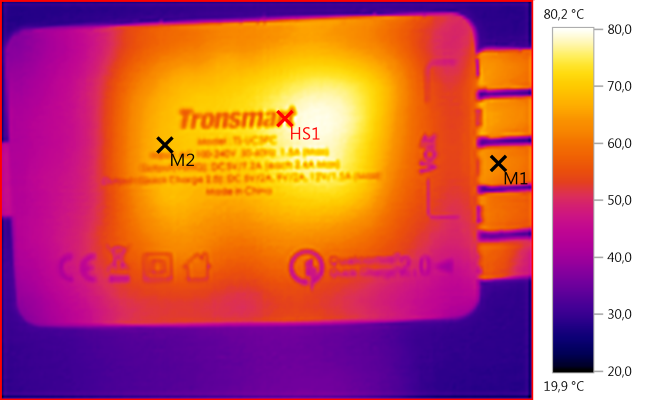
M1: 62,6°C, M2: 68,3°C, HS1: 80,2°C
HS1 is probably the two rectifier diodes for 5 volt.
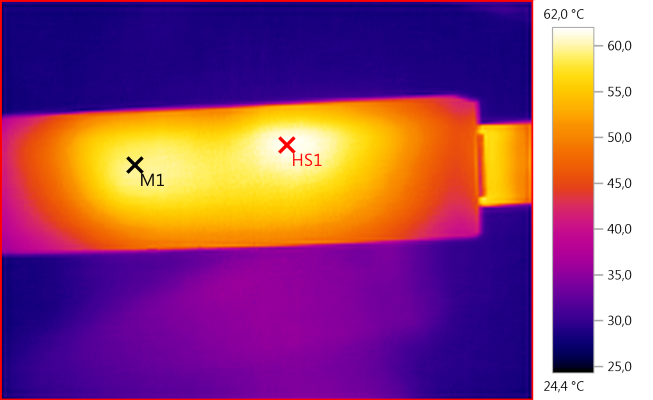
M1: 59,5°C, HS1: 62,0°C
HS1 must be the QC rectifier diode (D4).
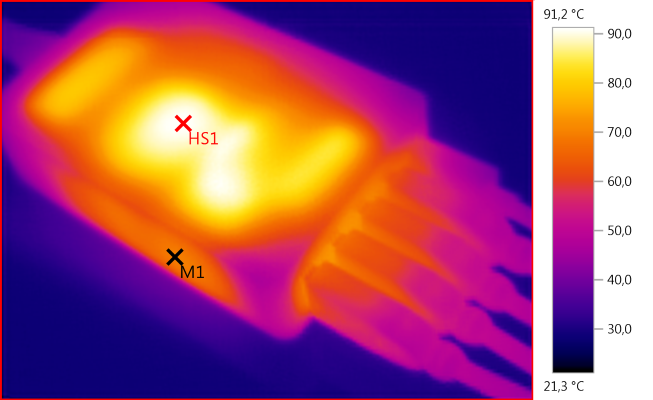
M1: 69,8°C, HS1: 91,2°C

At 0.5A current the noise is 22mV rms and 1.4Vpp, that is some very nasty peaks.

At 1A current the noise is 20mV rms and 1.2Vpp

At 2.5A current the noise is 28mV rms and 1.3Vpp
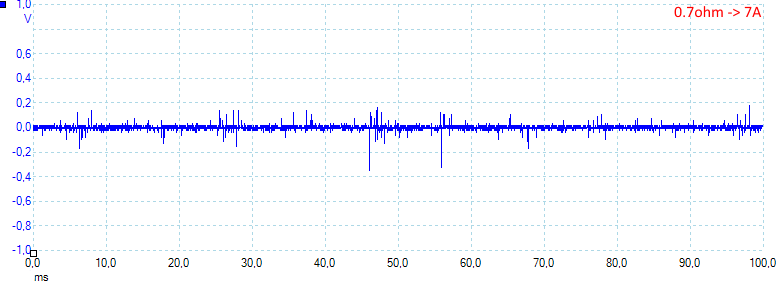
At 7A current the noise is 23mV rms and 997mVpp
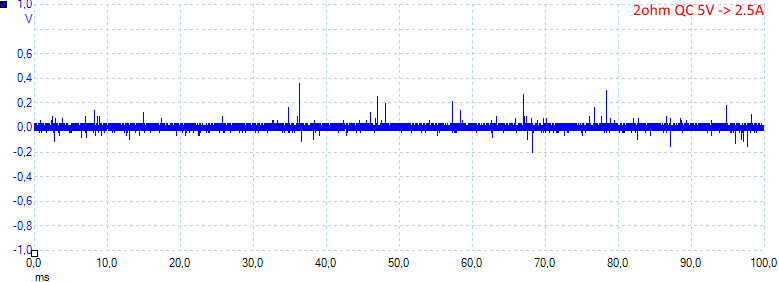
At 2.5A current on quick charge with 5V the noise is 40mV rms and 900mVpp, this noise is less, but not really good.
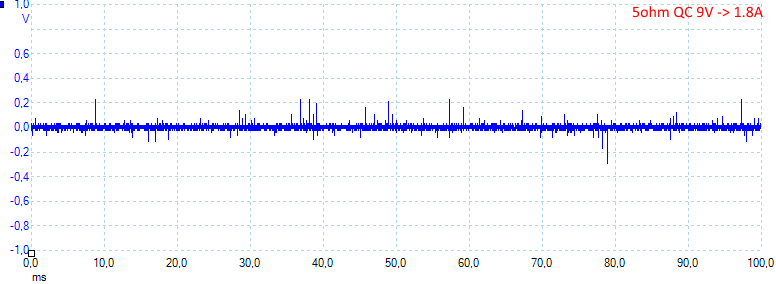
At 1.8A current on quick charge with 9V the noise is 23mV rms and 800mVpp

At 1.2A current on quick charge with 12V the noise is 26mV rms and 800mVpp
Tear down
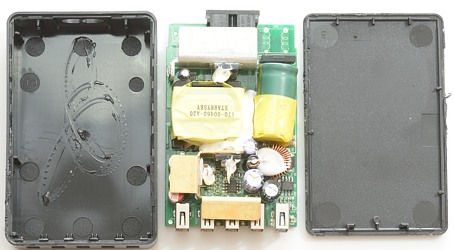
A squeze with my vice made the lid pop up in one corner, a bit work with a screwdriver as a crowbar and the lid was off.
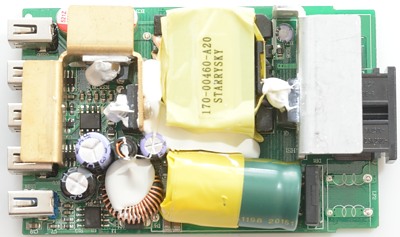
On the mains side there is a bridge rectifier and a mains switcher transistor on the heatsink, the common mode coil is missing.
The low volt side has 3 rectifier diodes on the golden heatsink, two for 5V and 1 for 8.3V that is in series with the 5V. The "big" chip in the center of the golden heatsink is a OpAmp (LM358), it may be related to the current limit. Below the golden heatsink is two chip for usb auto coding and the voltage reference.
U1 is the QC controller (PHY100) and L1 is used for the QC buck regulator. There is another inductor next to L1, it is used to filter some voltage (But obvious not enough).
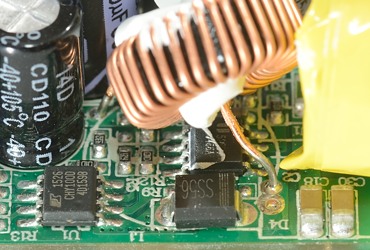
A look under L1 and the buck regulator can be seen. The big diode (D4) is for QC output.
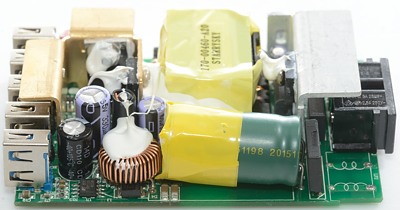
The mains capacitor has got some yellow tape to improve the isolation.
A fuse is hidden behind the mains input connector.
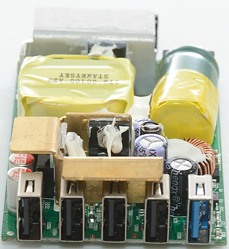


Below the mains switcher heatsink a black NTC can be seen, this is inrush current limiting.
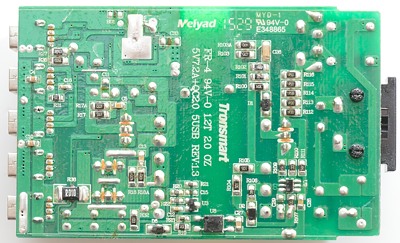
On this side of the circuit board there is the mains switcher controller (U9), opto feedback (U8) and current measuring resistor for 7A (R38, R010)


The safety distance is about 6mm.
Testing with 2500 volt and 5000 volt between mains and low volt side, did not show any safety problems.
Conclusion
The usb charger can deliver the rated current, but gets very hot. I do not expect this to be a big problem in real life (It will very seldom be fully loaded). I do not really like the peak noise, it is rather high.
The missing common mode coil on this high power charger probably means it is transmitting some radio interference.
Due to the high noise level I do not like this charger, but it will deliver lots of power in a safe way.
Notes
Index of all tested USB power supplies/chargers
Read more about how I test USB power supplies/charger
How does a usb charger work?





































